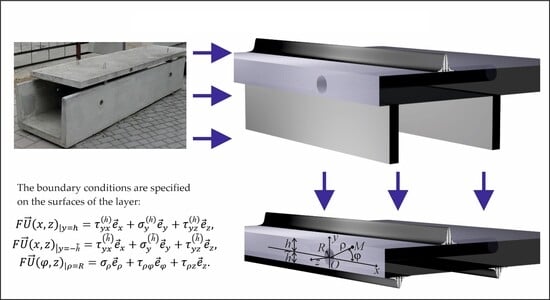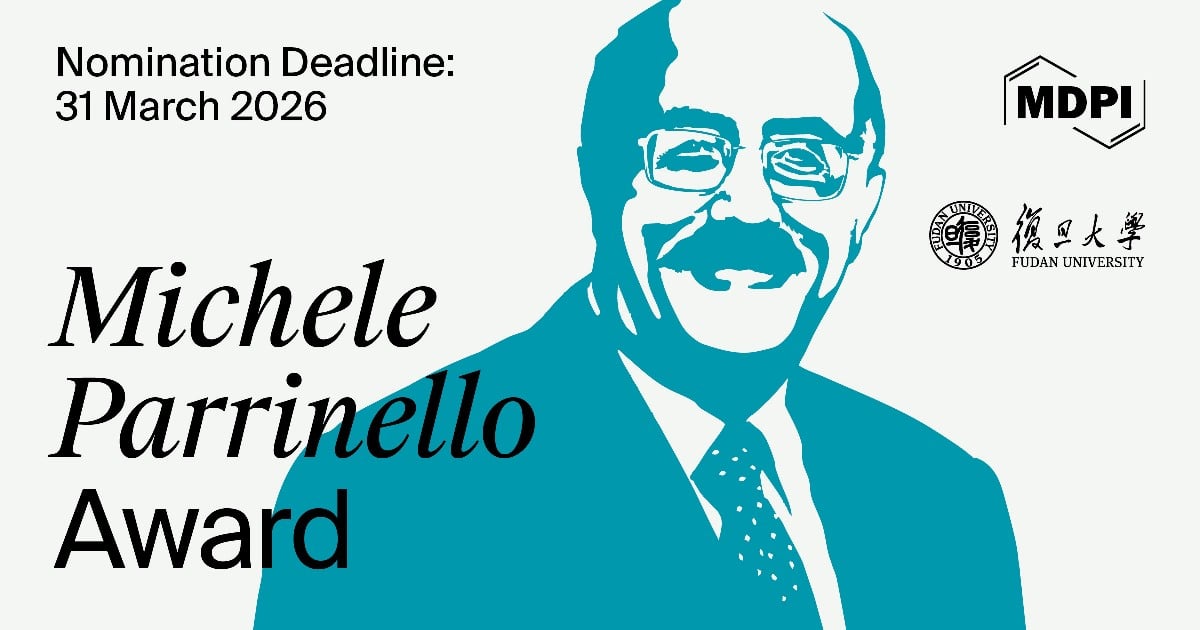Journal Description
Computation
Computation
is a peer-reviewed journal of computational science and engineering published monthly online by MDPI.
- Open Access— free for readers, with article processing charges (APC) paid by authors or their institutions.
- High Visibility: indexed within Scopus, ESCI (Web of Science), CAPlus / SciFinder, Inspec, dblp, and other databases.
- Journal Rank: JCR - Q2 (Mathematics, Interdisciplinary Applications) / CiteScore - Q1 (Applied Mathematics)
- Rapid Publication: manuscripts are peer-reviewed and a first decision is provided to authors approximately 16.7 days after submission; acceptance to publication is undertaken in 5.6 days (median values for papers published in this journal in the first half of 2025).
- Recognition of Reviewers: reviewers who provide timely, thorough peer-review reports receive vouchers entitling them to a discount on the APC of their next publication in any MDPI journal, in appreciation of the work done.
- Journal Cluster of Mathematics and Its Applications: AppliedMath, Axioms, Computation, Fractal and Fractional, Geometry, International Journal of Topology, Logics, Mathematics and Symmetry.
Impact Factor:
1.9 (2024);
5-Year Impact Factor:
1.9 (2024)
Latest Articles
Consideration of Spatially Infinite Loads in the Problem for a Layer with a Cylindrical Cavity and Continuous Supports
Computation 2025, 13(11), 270; https://doi.org/10.3390/computation13110270 - 17 Nov 2025
Abstract
An analytical method is proposed for determining the stress-strain state in an elastic layer with a cylindrical cavity supported by linear continuous supports perpendicular to the cavity. The need for such a development is due to the fact that in aerospace and mechanical
[...] Read more.
An analytical method is proposed for determining the stress-strain state in an elastic layer with a cylindrical cavity supported by linear continuous supports perpendicular to the cavity. The need for such a development is due to the fact that in aerospace and mechanical engineering, structural elements are often affected by loads and supports described by infinite functions. This complicates the calculation for spatial bodies with complex geometry and stress concentrators. The methodology is based on the generalized Fourier method within the spatial problem of elasticity theory. The model is considered as a layer with specified stresses at the outer boundaries, where the reactions of the supports are represented as applied loads. A combined approach is used to describe the geometry using a Cartesian coordinate system for the layer and a cylindrical coordinate system for the cavity. The key idea is to decompose the original problem into two simpler ones using the principle of superposition. Auxiliary problem: the stresses in a solid layer (without a cavity) are calculated to determine the stress fields at its nominal location. Main problem: a layer with a cavity is considered, on the surface of which the stresses calculated in the first step are acting but taken with the opposite sign. The complete solution is the sum of the solutions of these two problems. Each of them is reduced to an infinite system of linear algebraic equations, which is solved by the method of reduction. This approach makes it possible to calculate the stress-strain state at any point of the body with high accuracy. Numerical analysis confirmed the correctness of satisfying the boundary conditions and showed the dependence of stresses on the nature of the distributed loads. The cylindrical cavity acts as a stress concentrator, which leads to a local increase in stresses σx and σz at the upper and lower boundaries of the layer to values that exceed both the applied load by and the calculated resistance of concrete of class C25/30.
Full article
(This article belongs to the Section Computational Engineering)
►
Show Figures
Open AccessArticle
Beyond Correlation: An Explainable AI Framework for Diagnosing the Contextual Drivers of Financial Inclusion on Universal Health Coverage in the Arab World
by
Hasan Mhd Nazha, Mhd Ayham Darwich and Masah Alomari
Computation 2025, 13(11), 269; https://doi.org/10.3390/computation13110269 - 16 Nov 2025
Abstract
Universal Health Coverage (UHC) remains a core Sustainable Development Goal challenge for Arab nations, with structural inequalities and conflict ongoing in threatening equal access to health. Although literature concurs on the presence of a relationship between UHC and financial inclusion, contextual mechanisms underpinning
[...] Read more.
Universal Health Coverage (UHC) remains a core Sustainable Development Goal challenge for Arab nations, with structural inequalities and conflict ongoing in threatening equal access to health. Although literature concurs on the presence of a relationship between UHC and financial inclusion, contextual mechanisms underpinning this relationship remain poorly understood. This study offers an integrated Explainable AI (XAI)–Econometric methodology to unveil how financial inclusion—through digital as well as physical channels for services—drives UHC progress in 17 Arab nations (2011–2022). With the use of Feasible Generalized Least Squares (FGLS), Panel-Corrected Standard Errors (PCSE), and Random Forest regression with SHAP (SHapley Additive exPlanations) values, we estimate both average causal and heterogeneous contextual effects. The combined model increases predictive strength by 18% over conventional econometric baselines (R2 = 0.83), while the SHAP results identified top predicators. The findings suggest that ATM density and electricity access remain the overriding drivers of UHC whereas digital financial services play a role only with the complement of strong public health expenditures. The diagnostic result allows policymakers to designate country-specific challenges and prioritize joint investments in infrastructure and inclusive finance. While data constraints in conflict settings need cautious interpretation, the proposed XAI–econometric strategy supplies a replicable methodology template for contextualized SDG diagnostics.
Full article
(This article belongs to the Section Computational Social Science)
►▼
Show Figures
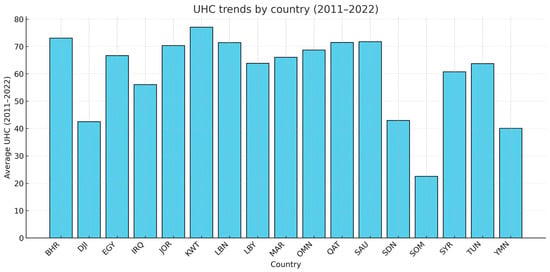
Figure 1
Open AccessArticle
Detection, Taxonomic Characterization, and Modeling of Extreme Operational Gusts in La Ventosa, Oaxaca, Mexico
by
Ángel D. J. Guillén-Olivera, Efraín Dueñas-Reyes, Emmanuel Hernández-Mayoral, Isaac Montoya De Los Santos, Ricardo Carreño-Aguilera and O. A. Jaramillo
Computation 2025, 13(11), 268; https://doi.org/10.3390/computation13110268 - 13 Nov 2025
Abstract
Extreme Operational Gusts (EOGs) are critical for assessing the effects of extreme winds on Wind Energy Conversion Systems (WECSs). In regions like La Ventosa, Oaxaca, Mexico—characterized by strong and frequent gusts—the performance and reliability of low-power WECSs can be severely impacted. Traditionally, EOG
[...] Read more.
Extreme Operational Gusts (EOGs) are critical for assessing the effects of extreme winds on Wind Energy Conversion Systems (WECSs). In regions like La Ventosa, Oaxaca, Mexico—characterized by strong and frequent gusts—the performance and reliability of low-power WECSs can be severely impacted. Traditionally, EOG effects have been analyzed using mathematical models from the IEC 61400-2 standard, which assumes a symmetric gust taxonomy. However, field data have revealed inconsistencies with this model, leading to the development of new asymmetrical taxonomies, such as Manwell’s. This study presents a taxonomic characterization of EOGs in La Ventosa using 1 Hz wind speed data collected over one year (December 2017–November 2018), during which 1655 events were detected. A dedicated detection method was implemented to capture gusts with amplitudes and durations exceeding the IEC range, allowing systematic classification of previously unrecognized patterns. Based on these results, a new taxonomy and a mathematical model were developed to simulate any identified gust. These tools provide more realistic simulations for improving WECS protection under extreme conditions. The analysis shows that Manwell’s taxonomy represents 50.39% of events, the proposed classification 37.04%, and IEC 61400-2 only 12.57%, underscoring its limited applicability to high-wind sites like La Ventosa.
Full article
(This article belongs to the Section Computational Engineering)
►▼
Show Figures
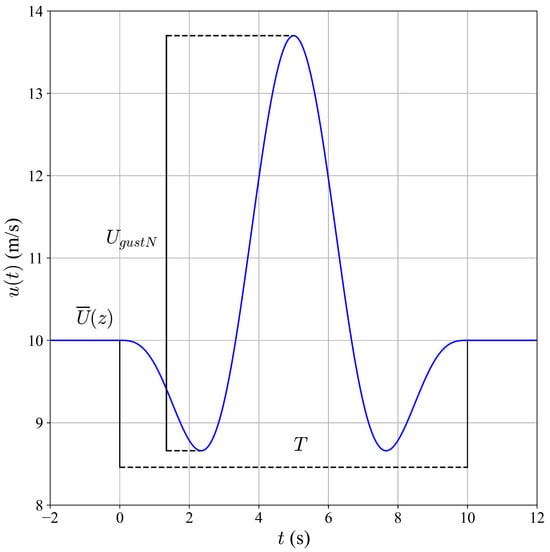
Figure 1
Open AccessArticle
A CAD-Integrated Framework for Dynamic Structural Topology Optimisation via Visual Programming
by
Laura Sardone, Stefanos Sotiropoulos and Alessandra Fiore
Computation 2025, 13(11), 267; https://doi.org/10.3390/computation13110267 - 13 Nov 2025
Abstract
Structural Topology Optimisation (STO) plays a critical role in computational engineering, enabling the creation of material-efficient, performance-driven structures. However, dynamic STO workflows, particularly those involving time-varying or seismic excitations, are often inaccessible to architects and engineers due to their reliance on standalone solvers,
[...] Read more.
Structural Topology Optimisation (STO) plays a critical role in computational engineering, enabling the creation of material-efficient, performance-driven structures. However, dynamic STO workflows, particularly those involving time-varying or seismic excitations, are often inaccessible to architects and engineers due to their reliance on standalone solvers, large-scale data handling, and advanced programming skills. This paper introduces a Computer-Aided Design (CAD)-embedded, time-dependent STO framework built upon a modular, adjoint-based optimisation core integrated into a Visual Programming Language (VPL) interface. Implemented within a parametric CAD environment through a custom C# component, the framework embeds a MATLAB-based solver to support geometry definition, boundary condition control, and dynamic finite element analysis under harmonic and seismic loading. The resulting Graphical User Interface (GUI) lowers technical barriers by enabling users to iteratively configure STO parameters, manage meshing, and visualise real-time results. Case studies on tall building façades under earthquake excitation validate the framework’s ability to minimise displacement at targeted Degrees of Freedom (DOFs), dynamically adapt material distributions, and enhance structural resilience. By bridging high-fidelity computational methods with accessible visual workflows, the proposed system advances the integration of dynamic STO into both architectural and engineering practice.
Full article
(This article belongs to the Special Issue Advanced Topology Optimization: Methods and Applications)
►▼
Show Figures

Figure 1
Open AccessArticle
Normalized Laplacian Diffusion for Robust Cancer Pathway Extension and Critical Gene Identification from Limited Data
by
Panisa Janyasupab, Apichat Suratanee and Kitiporn Plaimas
Computation 2025, 13(11), 266; https://doi.org/10.3390/computation13110266 - 10 Nov 2025
Abstract
Cancer progression is primarily driven by disruptions in critical biological pathways, including ErbB signaling, p53-mediated apoptosis, and GSK3 signaling. However, experimental and clinical studies typically identify only limited disease-associated genes, challenging traditional pathway analysis methods that require larger gene sets. To overcome this
[...] Read more.
Cancer progression is primarily driven by disruptions in critical biological pathways, including ErbB signaling, p53-mediated apoptosis, and GSK3 signaling. However, experimental and clinical studies typically identify only limited disease-associated genes, challenging traditional pathway analysis methods that require larger gene sets. To overcome this limitation, reliably expanded gene sets are required to align with cancer-related pathways. Although various propagation methods are available, the key challenge is to select techniques that can effectively propagate signals from limited seed gene sets through protein interaction networks, thereby generating robust, expanded sets capable of revealing pathway disruptions in cancer. In this study, the number of seed genes was systematically varied to evaluate the alignment of pathways obtained from different propagation methods with known pathways using Gene Ontology (GO) and Kyoto Encyclopedia of Genes and Genomes (KEGG) annotations. Among the evaluated propagation methods, normalized Laplacian diffusion (NLD) demonstrated the strongest alignment with reference pathways, with an average area under the ROC curve (AUC) of 95.11% and an area under precision–recall (AUPR) of 71.20%. Focusing specifically on well-established cancer pathways, we summarized the enriched pathways and discussed their biological relevance with limited gene input. Results from multiple runs were aggregated to identify genes consistently prioritized but absent from core pathway annotations, representing potential pathway extensions. Notable examples include RAC2 (ErbB pathway), FOXO3 and ESR1 (GSK3 signaling), and XIAP and BRD4 (p53 pathway), which were significantly associated with patient survival. Literature validation confirmed their biological relevance, underscoring their potential as prognostic markers and therapeutic targets. In summary, NLD-based diffusion proves effective for pathway discovery from limited input, extending beyond annotated members to reveal clinically relevant genes with therapeutic and biomarker potential.
Full article
(This article belongs to the Special Issue Feature Papers in Computational Biology)
►▼
Show Figures

Figure 1
Open AccessArticle
pyMKM: An Open-Source Python Package for Microdosimetric Kinetic Model Calculation in Research and Clinical Applications
by
Giuseppe Magro, Vittoria Pavanello, Yihan Jia, Loïc Grevillot, Lars Glimelius and Andrea Mairani
Computation 2025, 13(11), 264; https://doi.org/10.3390/computation13110264 - 9 Nov 2025
Abstract
Among existing radiobiological models, the MKM and its extensions (SMK and OSMK) have demonstrated strong predictive capabilities but remain computationally demanding. To address this, we present pyMKM v0.1.0, an open-source Python package for the generation of microdosimetric tables and radiobiological quantities based on
[...] Read more.
Among existing radiobiological models, the MKM and its extensions (SMK and OSMK) have demonstrated strong predictive capabilities but remain computationally demanding. To address this, we present pyMKM v0.1.0, an open-source Python package for the generation of microdosimetric tables and radiobiological quantities based on these models. The package includes modules for track structure integration, saturation and stochastic corrections, oxygen modulation, and survival fraction computation. Validation was conducted against multiple published datasets across various ion species, LET values, and cell lines under both normoxic and hypoxic conditions. Quantitative comparisons showed high agreement with reference data, with average log errors typically below 0.06 and symmetric mean absolute percentage errors under 2%. The software achieved full unit test coverage and successful execution across multiple Python versions through continuous integration workflows. These results confirm the numerical accuracy, structural robustness, and reproducibility of pyMKM. The package provides a transparent, modular, and extensible tool for microdosimetric modeling in support of radiobiological studies, Monte Carlo-based dose calculation, and biologically guided treatment planning.
Full article
(This article belongs to the Section Computational Biology)
►▼
Show Figures

Figure 1
Open AccessArticle
Digging SiC Semiconductor Efficiency for Trapping Main Group Metals in Cell Batteries: Application of Computational Chemistry by Mastering the Density Functional Theory Study
by
Fatemeh Mollaamin and Majid Monajjemi
Computation 2025, 13(11), 265; https://doi.org/10.3390/computation13110265 - 8 Nov 2025
Abstract
In this research article, a silicon carbide (SiC) nanocluster has been designed and characterized as an anode electrode for lithium (Li), sodium (Na), potassium (K), beryllium (Be), magnesium (Mg), boron (B), aluminum (Al) and gallium (Ga)-ion batteries through the formation of SiLiC, SiNaC,
[...] Read more.
In this research article, a silicon carbide (SiC) nanocluster has been designed and characterized as an anode electrode for lithium (Li), sodium (Na), potassium (K), beryllium (Be), magnesium (Mg), boron (B), aluminum (Al) and gallium (Ga)-ion batteries through the formation of SiLiC, SiNaC, SiKC, SiBeC, SiMgC, SiBC, SiAlC and SiGaC nanoclusters. A vast study on energy-saving by SiLiC, SiNaC, SiKC, SiBeC, SiMgC, SiBC, SiAlC and SiGaC complexes was probed using computational approaches accompanying density state analysis of charge density differences (CDDs), total density of states (TDOS) and molecular electrostatic potential (ESP) for hybrid clusters of SiLiC, SiNaC, SiKC, SiBeC, SiMgC, SiBC, SiAlC and SiGaC. The functionalization of Li, Na, K, Be, Mg, B, Al and Ga metal/metalloid elements can raise the negative charge distribution of carbon elements as electron acceptors in SiLiC, SiNaC, SiKC, SiBeC, SiMgC, SiBC, SiAlC and SiGaC nanoclusters. Higher Si/C content can increase battery capacity through SiLiC, SiNaC, SiKC, SiBeC, SiMgC, SiBC, SiAlC and SiGaC nanoclusters for energy storage processes and to improve the rate performance by enhancing electrical conductivity.
Full article
(This article belongs to the Section Computational Chemistry)
►▼
Show Figures

Figure 1
Open AccessArticle
Comparative Study of Oscillator Dynamics Under Deterministic and Stochastic Influences with Soliton Robustness Darboux Transformations and Chaos Transition
by
Maham Munawar, Adil Jhangeer and Mudassar Imran
Computation 2025, 13(11), 263; https://doi.org/10.3390/computation13110263 - 7 Nov 2025
Abstract
This paper presents a comprehensive study of nonlinear wave and oscillator dynamics under both deterministic and stochastic influences. By comparing soliton-like and dispersive waveforms, we employ spectral solvers, Darboux transformations, and nonlinear diagnostics, including Lyapunov exponents, power spectral analysis, and multidimensional phase-space reconstructions,
[...] Read more.
This paper presents a comprehensive study of nonlinear wave and oscillator dynamics under both deterministic and stochastic influences. By comparing soliton-like and dispersive waveforms, we employ spectral solvers, Darboux transformations, and nonlinear diagnostics, including Lyapunov exponents, power spectral analysis, and multidimensional phase-space reconstructions, to examine transitions from quasiperiodic motion to chaotic and stochastic regimes. The results highlight the robustness of soliton solutions in preserving energy and structure, in contrast to the degradation observed in dispersive waves under noise and damping. We also show that spectral broadening, entropy growth, and ergodic phase-space patterns are caused by the critical influence of initial conditions and noise intensity on system behavior. Incorporating control strategies such as OGY chaos control, this work provides a flexible framework for analyzing, modeling, and stabilizing nonlinear systems. Applications span nonlinear optics, fluid flows, and electrical lattices, offering insight into the interplay of nonlinearity and noise with implications for both theoretical understanding and practical system design.
Full article
(This article belongs to the Section Computational Engineering)
►▼
Show Figures
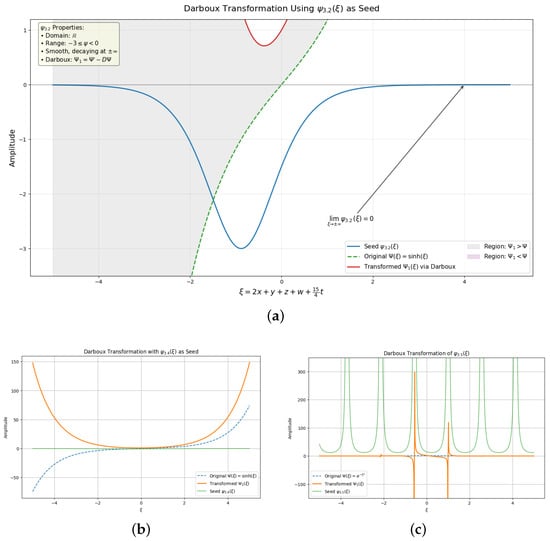
Figure 1
Open AccessArticle
An Efficient Filter Implementation Method and Its Applications in Topology Optimization Utilizing k-d Tree Data Structure
by
Jingbo Huang, Ayesha Saeed, Kai Long, Yutang Chen, Rongrong Geng, Jiao Jia and Tao Tao
Computation 2025, 13(11), 262; https://doi.org/10.3390/computation13110262 - 6 Nov 2025
Abstract
Topology optimization (TO) with the variable density concept has made significant advancements in academic research and engineering applications; yet it still encounters obstacles associated with computer inefficiencies in the filtering process. This work introduces a novel filter implementation method that significantly enhances the
[...] Read more.
Topology optimization (TO) with the variable density concept has made significant advancements in academic research and engineering applications; yet it still encounters obstacles associated with computer inefficiencies in the filtering process. This work introduces a novel filter implementation method that significantly enhances the optimization process by adapting the k-d tree data structure. The proposed method converts traditional neighborhood search operations into extremely efficient spatial searches while preserving solution accuracy. This method inherently accommodates a comprehensive array of manufacturability constraints, including symmetry, local volume control, periodic patterning, stamping-oriented overhang control, and more, without compromising computational duration. Extensive numerical examples validate the proposed method’s efficiency yielding precise, scalable designs, achieving substantial acceleration relative to conventional methods The method demonstrates specific advantage in large scale optimization challenges and intricate complex geometric restrictions, encompassing unstructured meshes. This study explores a new paradigm for effective constraint integration in topology optimization through advanced data structures, providing extensive applicability in engineering design.
Full article
(This article belongs to the Special Issue Advanced Topology Optimization: Methods and Applications)
►▼
Show Figures

Figure 1
Open AccessArticle
Computation in Algebraic Hyperstructures
by
Yuming Feng, Enrico Talotti and Violeta Leoreanu-Fotea
Computation 2025, 13(11), 261; https://doi.org/10.3390/computation13110261 - 4 Nov 2025
Abstract
The concept of the relation
The concept of the relation
(This article belongs to the Section Computational Engineering)
►▼
Show Figures
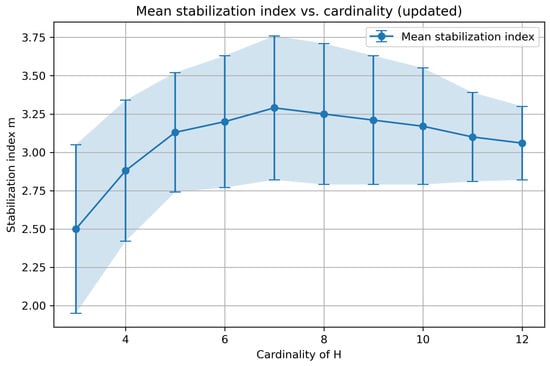
Figure 1
Open AccessArticle
Combination of Soviet-Era Surface Gravity and Modern Satellite Data for Geoid Model Computation: A Case Study for Kazakhstan
by
Daniya Shoganbekova, Asset Urazaliyev, Serik Nurakynov, Magzhan Kozhakhmetov, Nailya Zhaksygul and Roman Sermiagin
Computation 2025, 13(11), 260; https://doi.org/10.3390/computation13110260 - 4 Nov 2025
Abstract
Accurate geoid determination is essential for height system unification and for converting Global Navigation Satellite System (GNSS) ellipsoidal heights to orthometric heights. This study demonstrates a national-scale workflow that integrates digitized Soviet-era gravimetric maps at 1:200,000 scale with modern satellite and ancillary datasets
[...] Read more.
Accurate geoid determination is essential for height system unification and for converting Global Navigation Satellite System (GNSS) ellipsoidal heights to orthometric heights. This study demonstrates a national-scale workflow that integrates digitized Soviet-era gravimetric maps at 1:200,000 scale with modern satellite and ancillary datasets to compute a high-resolution gravimetric geoid for Kazakhstan. Legacy gravity maps were systematically digitized, harmonized, and quality-controlled, then integrated with a global geopotential model (XGM2019e_2159) for long-wavelength information and a digital elevation model (FABDEM) for terrain corrections. Geoid computation employed the Least-Squares Modification of Stokes’ Formula, with spectral testing used to select optimal parameters; external control and validation relied on an extensive set of GNSS observations and geometric levelling benchmarks from the national network. The resulting geoid surface captures the country’s full topographic range, from the Caspian Depression to the Tien Shan and Altai. After regression-based removal of residual tilts linked to distortions in the Baltic 1977 height system, we achieved a root-mean-square error of 0.066 m. The integrated use of 1:200,000 gravity maps and modern satellite-derived models yields accuracy improvements over widely used global solutions, establishing a consistent vertical reference for Kazakhstan and supporting datum modernization, GNSS-based heighting, infrastructure development, and environmental monitoring. These results show that digitized Soviet-era gravity maps, when fused with modern satellite datasets, can provide robust, high-accuracy geoid solutions.
Full article
(This article belongs to the Section Computational Engineering)
►▼
Show Figures
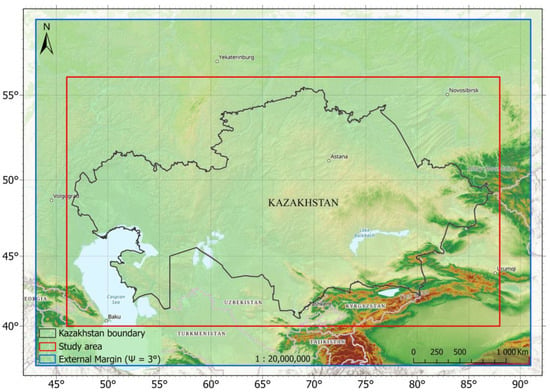
Figure 1
Open AccessArticle
Statistical Synthesis and Analysis of Optimal Radar Imaging Algorithm for LFM-CW SAR
by
Danyil Kovalchuk, Semen Zhyla, Volodymyr Trofymenko, Dmytro Vlasenko, Ihor Prokofiev, Oleksii Kosolapov and Maksym Vonsovych
Computation 2025, 13(11), 259; https://doi.org/10.3390/computation13110259 - 4 Nov 2025
Abstract
This paper presents a statistically grounded algorithm for surface imaging with linear frequency-modulated continuous wave synthetic aperture radar. The approach is based on the maximum likelihood principle, where solving the optimization problem naturally leads to the introduction of a spectral decorrelation filter. The
[...] Read more.
This paper presents a statistically grounded algorithm for surface imaging with linear frequency-modulated continuous wave synthetic aperture radar. The approach is based on the maximum likelihood principle, where solving the optimization problem naturally leads to the introduction of a spectral decorrelation filter. The proposed method increases the effective number of statistically independent samples, reduces speckle, and improves the accuracy of radar cross section estimation. Simulation experiments demonstrate consistent advantages over classical SAR processing: the proposed method achieves up to a 21% improvement in feature similarity metrics and an average 4% improvement across standard quantitative image quality measures.
Full article
(This article belongs to the Special Issue Integrated Computer Technologies in Mechanical Engineering—Synergetic Engineering IV)
►▼
Show Figures

Figure 1
Open AccessArticle
Integrating Linguistic and Eye Movements Features for Arabic Text Readability Assessment Using ML and DL Models
by
Ibtehal Baazeem, Hend Al-Khalifa and Abdulmalik Al-Salman
Computation 2025, 13(11), 258; https://doi.org/10.3390/computation13110258 - 3 Nov 2025
Abstract
Evaluating text readability is crucial for supporting both language learners and native readers in selecting appropriate materials. Cognitive psychology research, leveraging behavioral data such as eye-tracking and electroencephalogram (EEG) signals, has demonstrated effectiveness in identifying cognitive activities associated with text difficulty during reading.
[...] Read more.
Evaluating text readability is crucial for supporting both language learners and native readers in selecting appropriate materials. Cognitive psychology research, leveraging behavioral data such as eye-tracking and electroencephalogram (EEG) signals, has demonstrated effectiveness in identifying cognitive activities associated with text difficulty during reading. However, the distinctive linguistic characteristics of Arabic present unique challenges for applying such data in readability assessments. While behavioral signals have been explored for this purpose, their potential for Arabic remains underutilized. This study aims to advance Arabic readability assessments by integrating eye-tracking features into computational models. It presents a series of experiments that utilize both text-based and gaze-based features within machine learning (ML) and deep learning (DL) frameworks. The gaze-based features were extracted from the AraEyebility corpus, which contains eye-tracking data collected from 15 native Arabic speakers. The experimental results show that ensemble ML models, particularly AdaBoost with linguistic and eye-tracking handcrafted features, outperform ML models using TF-IDF and DL models employing word embedding vectorization. Among the DL models, convolutional neural networks (CNNs) achieved the best performance with combined linguistic and eye-tracking features. These findings underscore the value of cognitive data and emphasize the need for exploration to fully realize its potential in Arabic readability assessment.
Full article
(This article belongs to the Special Issue Recent Advances on Computational Linguistics and Natural Language Processing)
►▼
Show Figures

Figure 1
Open AccessArticle
Investigation on the Flow and Heat Transfer Behavior of Molten Steel During Continuous Casting
by
Guohui Li, Fengming Du, Tianyi Li and Shuai Zhang
Computation 2025, 13(11), 257; https://doi.org/10.3390/computation13110257 - 2 Nov 2025
Abstract
The flow and heat transfer inside the mold play an important role in the quality of the casting billet during continuous casting. In this work, a three-dimensional coupled model of flow and heat transfer was established, and the flow field and temperature distribution
[...] Read more.
The flow and heat transfer inside the mold play an important role in the quality of the casting billet during continuous casting. In this work, a three-dimensional coupled model of flow and heat transfer was established, and the flow field and temperature distribution characteristics of molten steel were explored in depth. The results indicated that the narrow impact position is 315 mm away from the meniscus. The maximum turbulence kinetic energy of the centerline reached 0.00284 m2∙s−2, 108 mm from the narrow surface. The temperature of the steel liquid on the path of the two splitting strands located in the upper and lower circulation zones was above 1781 K. The temperature range from the center of the billet to the narrow 1/4 section, which was enclosed by the upper annular flow zone and 400 mm below the liquid level, was relatively low and lower than the liquidus temperature. The model can provide guidance for improving and optimizing the quality of continuous casting billets.
Full article
(This article belongs to the Special Issue Advances in Computational Methods for Fluid Flow)
►▼
Show Figures

Figure 1
Open AccessArticle
AI-Driven Multi-Agent Energy Management for Sustainable Microgrids: Hybrid Evolutionary Optimization and Blockchain-Based EV Scheduling
by
Abhirup Khanna, Divya Srivastava, Anushree Sah, Sarishma Dangi, Abhishek Sharma, Sew Sun Tiang, Jun-Jiat Tiang and Wei Hong Lim
Computation 2025, 13(11), 256; https://doi.org/10.3390/computation13110256 - 2 Nov 2025
Abstract
The increasing complexity of urban energy systems requires decentralized, sustainable, and scalable solutions. The paper presents a new multi-layered framework for smart energy management in microgrids by bringing together advanced forecasting, decentralized decision-making, evolutionary optimization and blockchain-based coordination. Unlike previous research addressing these
[...] Read more.
The increasing complexity of urban energy systems requires decentralized, sustainable, and scalable solutions. The paper presents a new multi-layered framework for smart energy management in microgrids by bringing together advanced forecasting, decentralized decision-making, evolutionary optimization and blockchain-based coordination. Unlike previous research addressing these components separately, the proposed architecture combines five interdependent layers that include forecasting, decision-making, optimization, sustainability modeling, and blockchain implementation. A key innovation is the use of Temporal Fusion Transformer (TFT) for interpretable multi-horizon forecasting of energy demand, renewable generation, and electric vehicle (EV) availability which outperforms conventional LSTM, GRU and RNN models. Another novelty is the hybridization of Genetic Algorithms (GA) and Particle Swarm Optimization (PSO), to simultaneously support discrete and continuous decision variables, allowing for dynamic pricing, efficient energy dispatching and adaptive EV scheduling. Multi-Agent Reinforcement Learning (MARL) which is improved by sustainability shaping by including carbon intensity, renewable utilization ratio, peak to average load ratio and net present value in agent rewards. Finally, Ethereum-based smart contracts add another unique contribution by providing the implementation of transparent and tamper-proof peer-to-peer energy trading and automated sustainability incentives. The proposed framework strengthens resilient infrastructure through decentralized coordination and intelligent optimization while contributing to climate mitigation by reducing carbon intensity and enhancing renewable integration. Experimental results demonstrate that the proposed framework achieves a 14.6% reduction in carbon intensity, a 12.3% increase in renewable utilization ratio, and a 9.7% improvement in peak-to-average load ratio compared with baseline models. The TFT-based forecasting model achieves RMSE = 0.041 kWh and MAE = 0.032 kWh, outperforming LSTM and GRU by 11% and 8%, respectively.
Full article
(This article belongs to the Special Issue Evolutionary Computation for Smart Grid and Energy Systems)
►▼
Show Figures

Graphical abstract
Open AccessArticle
Linear Heat Diffusion Inverse Problem Solution with Spatio-Temporal Constraints for 3D Finite Element Models
by
Luis Fernando Alvarez-Velasquez and Eduardo Giraldo
Computation 2025, 13(11), 255; https://doi.org/10.3390/computation13110255 - 2 Nov 2025
Abstract
High-voltage ceramic insulators are routinely exposed to short-duration overvoltages such as lightning impulses, switching surges, and partial discharges. These events occur on microsecond to millisecond timescales and can produce highly localized thermal spikes that are difficult to measure directly but may compromise long-term
[...] Read more.
High-voltage ceramic insulators are routinely exposed to short-duration overvoltages such as lightning impulses, switching surges, and partial discharges. These events occur on microsecond to millisecond timescales and can produce highly localized thermal spikes that are difficult to measure directly but may compromise long-term material integrity. This paper addresses the estimation of the internal temperature distribution immediately after a lightning impulse by solving a three-dimensional inverse heat conduction problem (IHCP). The forward problem is modeled by the transient heat diffusion equation with constant thermal diffusivity, discretized using the finite element method (FEM). Surface temperature measurements are assumed available from a 12 kV ceramic post insulator and are used to reconstruct the unknown initial condition. To address the ill-posedness of the IHCP, a spatio-temporal regularization framework is introduced and compared against spatial-only regularization. Numerical experiments investigate the effect of measurement time (
(This article belongs to the Section Computational Engineering)
►▼
Show Figures

Figure 1
Open AccessArticle
Modeling Disease Dynamics in a Prey–Predator System with Competition, Fear, and Cooperative Hunting
by
Alyaa Hussain Naser and Dahlia Khaled Bahlool
Computation 2025, 13(11), 254; https://doi.org/10.3390/computation13110254 - 2 Nov 2025
Abstract
This study developed an eco-epidemiological model of a prey–predator system with three populations—susceptible prey, infected prey, and predator—to model the transmission of disease and contact epidemiology based on direct interactions between susceptible and infected prey. For the predictive modeling to be relevant, we
[...] Read more.
This study developed an eco-epidemiological model of a prey–predator system with three populations—susceptible prey, infected prey, and predator—to model the transmission of disease and contact epidemiology based on direct interactions between susceptible and infected prey. For the predictive modeling to be relevant, we developed a system and performed stability analysis at global and local scales to assess species persistence or extinction. We conducted bifurcation analysis to identify the optimal values of important parameters in which small modifications produced noticeable changes in the population dynamics. Under varying ecological and epidemiological elements, the simulation findings revealed population stability. Based on its effect on species survival and food chain dynamics, our results shed light on the function of cooperative hunting in preserving ecological equilibrium. We discuss how ecosystems are formed by disease and predator–prey interactions, offering data for wildlife management and conservation.
Full article
(This article belongs to the Section Computational Biology)
►▼
Show Figures
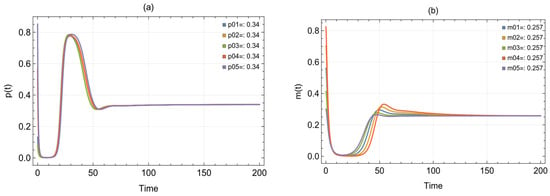
Figure 1
Open AccessArticle
A Hybrid Approach for Automated Identification of the Two-Phase Wellbore Flow Model
by
Anton Gryzlov, Eugene Magadeev and Muhammad Arsalan
Computation 2025, 13(11), 253; https://doi.org/10.3390/computation13110253 - 2 Nov 2025
Abstract
It is demonstrated that the general representation of a dynamic multiphase wellbore flow model may be identified from the available physical measurements. The proposed approach is based on the techniques of numerical optimization and also requires the availability of solvers for the general
[...] Read more.
It is demonstrated that the general representation of a dynamic multiphase wellbore flow model may be identified from the available physical measurements. The proposed approach is based on the techniques of numerical optimization and also requires the availability of solvers for the general type of partial differential equations describing two-phase gas–oil flow. A solution is obtained both for the case of the homogeneous no-slip model and the drift-flux model with velocity slip. The feasibility of the proposed approach for system identification and parameter estimation has been demonstrated using simulated flow data. Two distinct scenarios have been considered: firstly, when the well is fully instrumented with multiple pressure sensors and a multiphase flow meter, and secondly, when only a single downhole pressure gauge is available.
Full article
(This article belongs to the Special Issue Advances in Computational Methods for Fluid Flow)
►▼
Show Figures

Figure 1
Open AccessArticle
An Analysis of the Computational Complexity and Efficiency of Various Algorithms for Solving a Nonlinear Model of Radon Volumetric Activity with a Fractional Derivative of a Variable Order
by
Dmitrii Tverdyi
Computation 2025, 13(11), 252; https://doi.org/10.3390/computation13110252 - 2 Nov 2025
Abstract
The article presents a study of the computational complexity and efficiency of various parallel algorithms that implement the numerical solution of the equation in the hereditary
The article presents a study of the computational complexity and efficiency of various parallel algorithms that implement the numerical solution of the equation in the hereditary
(This article belongs to the Section Computational Engineering)
►▼
Show Figures

Figure 1
Open AccessArticle
Intelligent Identification Method of Valve Internal Leakage in Thermal Power Station Based on Improved Kepler Optimization Algorithm-Support Vector Regression (IKOA-SVR)
by
Fengsheng Jia, Tao Jin, Ruizhou Guo, Xinghua Yuan, Zihao Guo and Chengbing He
Computation 2025, 13(11), 251; https://doi.org/10.3390/computation13110251 - 2 Nov 2025
Abstract
Valve internal leakage in thermal power stations exhibits a strong concealed nature. If it cannot be discovered and predicted of development trend in time, it will affect the safe and economical operation of plant equipment. This paper proposed an intelligent identification method for
[...] Read more.
Valve internal leakage in thermal power stations exhibits a strong concealed nature. If it cannot be discovered and predicted of development trend in time, it will affect the safe and economical operation of plant equipment. This paper proposed an intelligent identification method for valve internal leakage that integrated an Improved Kepler Optimization Algorithm (IKOA) with Support Vector Regression (SVR). The Kepler Optimization Algorithm (KOA) was improved using the Sobol sequence and an adaptive Gaussian mutation strategy to achieve self-optimization of the key parameters in the SVR model. A multi-step sliding cross-validation method was employed to train the model, ultimately yielding the IKOA-SVR intelligent identification model for valve internal leakage quantification. Taking the main steam drain pipe valve as an example, a simulation case validation was carried out. The calculation example used Mean Squared Error (MSE), Root Mean Squared Error (RMSE), Mean Absolute Error (MAE), Mean Absolute Percentage Error (MAPE) and determination coefficient (R2) as performance evaluation metrics, and compared and analyzed the training and testing dataset using IKOA-SVR, KOA-SVR, Particle Swarm Optimization (PSO)-SVR, Random Search (RS)-SVR, Grid Search (GS)-SVR, and Bayesian Optimization (BO)-SVR methods, respectively. For the testing dataset, the MSE of IKOA-SVR is 0.65, RMSE is 0.81, MAE is 0.49, and MAPE is 0.0043, with the smallest values among the six methods. The R2 of IKOA-SVR is 0.9998, with the largest value among the six methods. It indicated that IKOA-SVR can effectively solve problems such as getting stuck in local optima and overfitting during the optimization process. An Out-Of-Distribution (OOD) test was conducted for two scenarios: noise injection and Region-Holdout. The identification performance of all six methods decreased, with IKOA-SVR showing the smallest performance decline. The results show that IKOA-SVR has the strongest generalization ability and robustness, the best effect in improving fitting ability, the smallest identification error, the highest identification accuracy, and results closer to the actual value. The method presented in this paper provides an effective approach to solve the problem of intelligent identification of valve internal leakage in thermal power station.
Full article
(This article belongs to the Topic Intelligent Optimization Algorithm: Theory and Applications)
►▼
Show Figures

Figure 1
Highly Accessed Articles
Latest Books
E-Mail Alert
News
Topics
Topic in
AppliedMath, Axioms, Computation, Mathematics, Symmetry
A Real-World Application of Chaos Theory
Topic Editors: Adil Jhangeer, Mudassar ImranDeadline: 28 February 2026
Topic in
Axioms, Computation, Fractal Fract, Mathematics, Symmetry
Fractional Calculus: Theory and Applications, 2nd Edition
Topic Editors: António Lopes, Liping Chen, Sergio Adriani David, Alireza AlfiDeadline: 30 May 2026
Topic in
Brain Sciences, NeuroSci, Applied Sciences, Mathematics, Computation
The Computational Brain
Topic Editors: William Winlow, Andrew JohnsonDeadline: 31 July 2026
Topic in
Sustainability, Remote Sensing, Forests, Applied Sciences, Computation
Artificial Intelligence, Remote Sensing and Digital Twin Driving Innovation in Sustainable Natural Resources and Ecology
Topic Editors: Huaiqing Zhang, Ting YunDeadline: 31 January 2027

Special Issues
Special Issue in
Computation
Multi-Omics for Diagnosing Diseases: Bioinformatics Approaches and Integrative Data Analyses
Guest Editors: Emanuel Maldonado, Imran KhanDeadline: 30 November 2025
Special Issue in
Computation
Kinematics, Dynamics and Control for Rehabilitation Robotics and Prostheses
Guest Editor: Manuel Arias-MontielDeadline: 30 December 2025
Special Issue in
Computation
Object Detection Models for Transportation Systems
Guest Editors: Taqwa AlHadidi, Shadi Jaradat, Ahmed JaberDeadline: 31 December 2025
Special Issue in
Computation
Advanced Topology Optimization: Methods and Applications
Guest Editor: Yun-Fei FuDeadline: 31 December 2025



